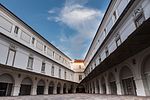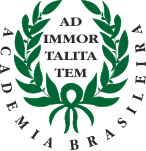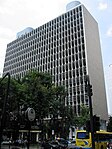Santos Dumont Airport
Airfields of the United States Army Air Forces Air Transport Command in South AmericaAirports established in 1936Airports in Rio de Janeiro (city)Airports in Rio de Janeiro (state)Alberto Santos-Dumont ... and 2 more
Guanabara BayTransport in Rio de Janeiro (city)

Santos Dumont Airport (IATA: SDU, ICAO: SBRJ) is the second major airport serving Rio de Janeiro, Brazil. It is named after the Brazilian aviation pioneer Alberto Santos Dumont (1873–1932). It is operated by Infraero. Santos Dumont has slot restrictions operating with a maximum of 19 operations/hour, being one of the five airports with such restrictions in Brazil.
Excerpt from the Wikipedia article Santos Dumont Airport (License: CC BY-SA 3.0, Authors, Images).Santos Dumont Airport
Praça Senador Salgado Filho, Rio de Janeiro Centro (Zona Central do Rio de Janeiro)
Geographical coordinates (GPS) Address Phone number Website External links Nearby Places Show on map
Geographical coordinates (GPS)
| Latitude | Longitude |
|---|---|
| N -22.91 ° | E -43.1625 ° |
Address
Aeroporto Santos Dumont
Praça Senador Salgado Filho
20021-340 Rio de Janeiro, Centro (Zona Central do Rio de Janeiro)
Rio de Janeiro, Brazil
Open on Google Maps









